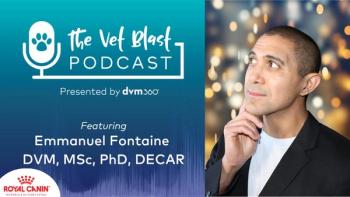
Equine skin grafting best practices
Daniel J. Burba, DVM, DACVS, explained the basics of equine skin grafting in a session during the 2024 Southwest Veterinary Symposium, and in an interview with dvm360
Daniel J. Burba, DVM, DACVS, a professor of equine surgery at Oklahoma State University's College of Veterinary Medicine delivered a presentation on equine skin grafting during the 2024 Southwest Veterinary Symposium in Fort Worth, Texas. In an interview with dvm360, Burba expressed the importance of skin grafting as a method for wound management.
Equine wounds, particularly those on limbs, can take significant time to heal on their own, often several weeks to months. Skin grafts are used to accelerate and enhance the healing process. In the interview, Burba explained what might go into the decision between full and split thickness skin grafts, how to properly choose a donor site, and things to keep in mind post-operation.
Below is a partial transcript
Daniel J. Burba, DVM, DACVS: You know... really it comes down to 2 things. One is the equipment needed... for doing a split thickness graph. There is special equipment, referred to as a dermatome, that's required to be able to harvest those split thickness graphs, and then [the second factor would be the] experience and skill to do that. So, you know, if your clinic or hospital is not set up to be able to do those 2, then it's difficult to be able to do a split thickness graph, because it does require a fair bit of training, you know. [It requires] some practice, I guess [is] best way to put it, in order to do 1, and [actually] having a dermatome to be able to split the skin.
Newsletter
From exam room tips to practice management insights, get trusted veterinary news delivered straight to your inbox—subscribe to dvm360.






